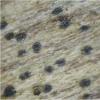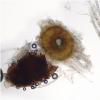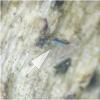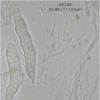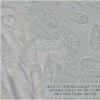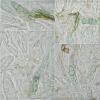
22-02-2018 18:11
 Riet van Oosten
Riet van Oosten
Hello,Found by a friend: february 2018.On: Ribes n

22-02-2018 21:56
Patrice TANCHAUDBonsoir,apothécies 1-3 cm, spores 16-17 x 7,8-8,5

22-02-2018 20:07
Patrice TANCHAUDBonsoir,spores 16-17 x 7,8-8,5 µm. Il y a de quoi

21-02-2018 13:16
Jan KnuimanHello,We found these small (cup diameter up to 1 m

21-02-2018 22:32
 Viktorie Halasu
Viktorie Halasu
Dear ascomycete friends, especially those from Ru

15-02-2018 16:39
 Pérez del Amo Carlos Manuel
Pérez del Amo Carlos Manuel
Hola amigos, Tengo esta recolecta del pasado sáb

20-02-2018 14:48
Me llega material seco desde Galicia, enmadera s
Pyrenomycete
Garcia Susana,
23-02-2018 13:48
Encontrado sobre madera de planifolio.
Son peritecios aplanados de aproximadamente 300um de diámetro x 100um de grosor. Con pared gruesa y carbonacea en la parte apical y delgada y no carbonacea en la inferior.
El himenio se observa de color verdoso a la lupa.
Las esporas con tres septos aparecen de color verde-azulado en ocasiones.
No me encaja nada. ¿Microthyriaceae?
¿Alguna idea?
Gracias de antemano y un saludo
Susana
Zdenek Palice,
23-02-2018 14:26
Re : Pyrenomycete
Hallo,
your fungus is likely Exarmidium inclusum, which was discussed many times here on the forum
Zdenek
Enrique Rubio,
23-02-2018 14:30
Re : Pyrenomycete
De acuerdo con Zdenek. Aquí lo tienes también, Susana http://www.xn--centrodeestudiosmicolgicosasturianos-grd.com/search/label/Exarmidium%20inclusum
Probablemente lo mismo que Munk describió como Winterina clavata.Saludos
Probablemente lo mismo que Munk describió como Winterina clavata.Saludos
Garcia Susana,
23-02-2018 18:14
Re : Pyrenomycete
Gracias chicos, encaja perfectamente.
Un saludo
Susana
Un saludo
Susana

